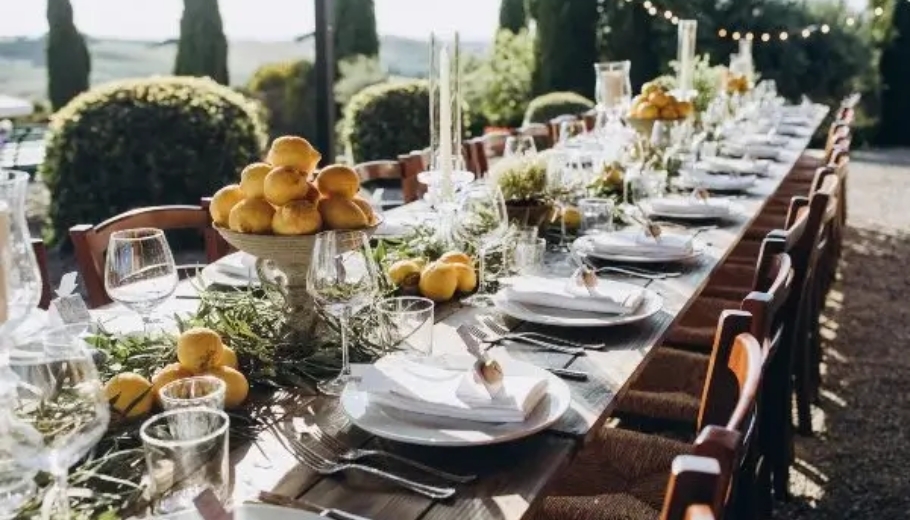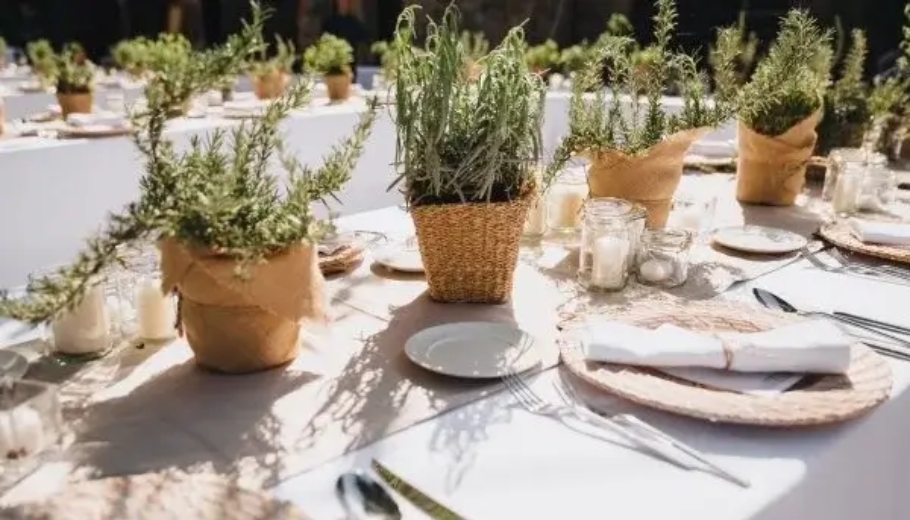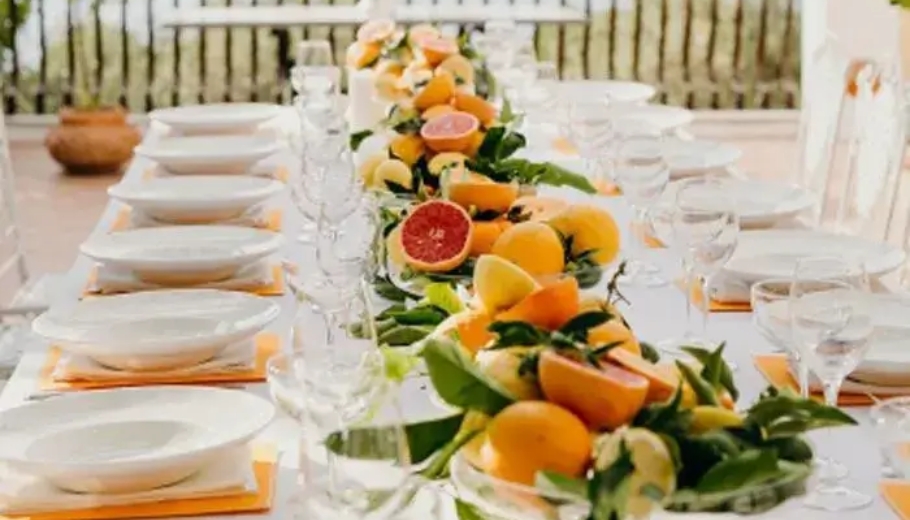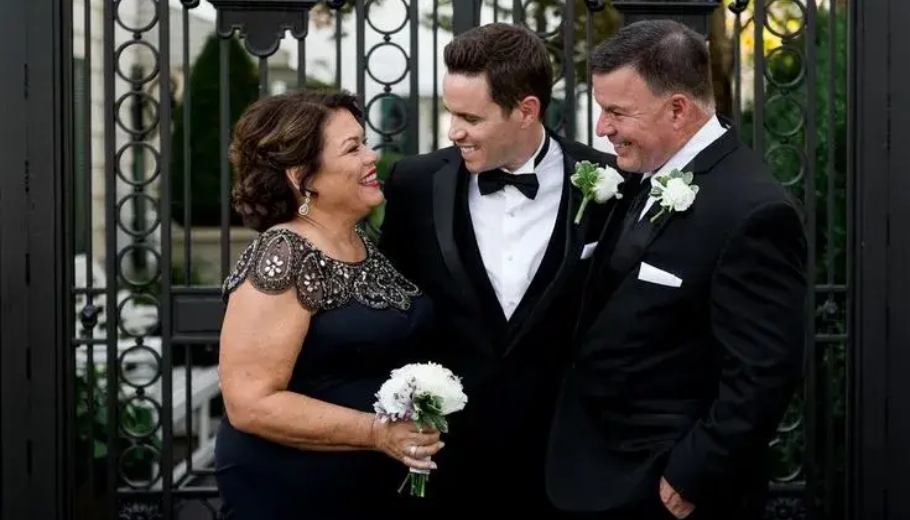21 Wedding Centerpieces Ideas! Greenery, Herbs, & Citrus
Prepare to transport your guests to an ethereal garden of sensory delights as we unlock the secret to unforgettable wedding centrepieces.
Picture lush greenery cascading like verdant waterfalls, delicate herbs releasing their aromatic whispers, and vibrant citrus fruits adding a burst of sunshine to every table.
Today, we’re unravelling the magic of combining nature’s bounty to create wedding centrepieces that are not just decorations but living, breathing works of art. Join us as we redefine tradition and infuse your special day with the essence of botanical elegance.
As you plan your wedding, centrepieces are one of the most crucial elements in setting the ambiance and style of your celebration.
Gone are the days of traditional floral arrangements as couples are increasingly drawn towards incorporating fresh, innovative ideas that reflect their personalities and passions.
Enter greenery, herbs, and citrus fruits – a trifecta of natural beauty that promises to elevate your wedding décor to new heights.

Citrus Fruit centrepieces
Elevate your wedding reception décor with the vibrant charm and unexpected element of citrus fruit centrepieces. Incorporating fruit into your wedding tablescape adds a refreshing twist to traditional floral arrangements, which your guests will not expect but will love.
From citrus-infused water dispensers to garland runners adorned with slices of lemon, lime, and orange, here are some incredible fruit centrepieces for wedding receptions that seamlessly blend fruit and flowers for unforgettable tablescapes.
1. Citrus Slice Vases: Fill glass vases with water and add slices of citrus fruits like lemons, limes, and oranges. Arrange flowers or greenery stems in the vases for a fresh and vibrant centrepiece.
2. Citrus and Candle Lanterns: Place citrus fruits such as grapefruits or pomelos inside large lanterns along with pillar candles. The warm glow of the candles will illuminate the colourful fruits for a romantic ambiance.
3. Citrus Bowl Bouquets: Hollow out large citrus fruits like grapefruits or oranges and use them as natural containers for small bouquets of flowers or herbs. Display them as charming and fragrant accents on tables.
4. Citrus Garland Runners: Create garlands using slices of citrus fruits strung together with twine. Lay them down the center of tables as unique table runners, interspersed with greenery or herbs for added texture.
5. Citrus and Succulent Terrariums: Fill glass terrariums with layers of citrus slices, decorative stones, and small succulent plants. These mini gardens make delightful and low-maintenance centrepieces.
6. Citrus Infused Water Dispensers: Serve refreshing citrus-infused water in large glass dispensers with slices of lemon, lime, and orange floating inside. Decorate the dispensers with fresh herbs like mint or basil for an extra touch of flavour and elegance.
7. Citrus Wreath centrepieces: Create wreaths using dried citrus slices, bay leaves, and cinnamon sticks. Place them around pillar candles or hurricane lamps for a cozy and aromatic centrepiece option.

Herb centrepieces
If you’re seeking wedding decor that departs from the usual arrangements and offers a delightful and aromatic twist, consider opting for herbal centrepieces.
These herbal wedding centrepieces bring a unique charm to your reception tables, infusing the air with the fresh scents of rosemary, thyme, and sage.
Here are some of our favourite herb wedding centrepiece ideas.
1. Herb Garden centrepiece: Arrange small pots of fresh herbs like rosemary, thyme, and sage in a wooden crate or basket. Guests can pluck herbs to add flavour to their meals or as fragrant keepsakes.
2. Herb Bouquet Bundles: Tie bundles of fresh herbs with twine and place them in small vases or mason jars as fragrant table decorations. Mix and match herbs like lavender, basil, and mint for visual interest.
3. Herb-Infused Olive Oil Bottles: Fill decorative bottles with olive oil infused with herbs like rosemary, garlic, oregano and thyme. Display them alongside crusty bread on tables for guests to enjoy as appetizers or favours.
4. Herb Topiary Trees: Create mini topiary trees using herbs like rosemary or lavender trimmed into cone shapes. Plant them in decorative pots and adorn them with ribbon or floral accents for a whimsical centrepiece option. These are great because guests can take them home with them as a keepsake of your celebration.
5. Herb-Scented Candles: Use candles infused with essential oils of herbs like basil, sage, or lemongrass as elegant and aromatic centrepieces. Arrange them in clusters on mirrored trays for added visual impact.
6. Herb Place Card Holders: Attach small sprigs of herbs to place card holders or table numbers for a charming and functional centrepiece detail. Guests can also take them home as fragrant mementos of your big day.
7. Herb Garland Swags: Create swags of fresh herbs like bay leaves, thyme, and oregano to drape along the backs of chairs or across tables. Add clusters of berries or citrus fruits for a seasonal and festive touch.
Ready to plan your Luxury
Wedding in Italy?
Potted Plant centrepieces
For another innovative and memorable option in wedding centrepieces, consider incorporating potted plants into your decor.
Potted plant centrepieces offer a fresh and sustainable alternative, bringing the beauty of nature to your tables in an eco-friendly way.
From miniature fern gardens to elegant orchids, these unique potted plant arrangements add a touch of greenery and sophistication to your wedding reception.
1. Succulent Garden centrepiece: Arrange an assortment of succulent plants in shallow trays or terrariums as a modern and eco-friendly centrepiece option. Decorate them with decorative stones or moss for added texture.
2. Potted Citrus Trees: Use small potted citrus trees, such as lemon or lime, as elegant and fragrant centrepieces. Decorate the pots with ribbon or fabric to match your wedding theme.

3. Miniature Fern Gardens: Create miniature garden landscapes using ferns planted in decorative containers. Add small decorative elements like fairy lights or figurines for a whimsical touch.
4. Potted Herb Favor Station: Set up a station with potted herb plants for guests to take home as wedding favours. Display them in rustic crates or baskets with personalized tags or labels.
5. Succulent Terrarium Table Numbers: Use succulent terrariums as unique table number holders. Arrange them on mirrored trays or wooden slabs for a cohesive and elegant look.
6. Potted Lavender centrepieces: Plant potted lavender plants in decorative containers for a fragrant and romantic centrepiece option. Tie them with ribbon or twine for a rustic and charming touch.
7. Potted Orchid Elegance: Showcase elegant potted orchid plants as sophisticated and timeless centrepieces. Place them in decorative containers or vases filled with decorative stones or moss for added flair.
These 21 wedding centrepiece ideas offer a diverse range of options for incorporating citrus fruit, herbs, and potted plants into your wedding decor.
Whether you prefer the vibrant colours of citrus, the aromatic allure of herbs, or the timeless elegance of potted plants, there’s a centrepiece idea to suit every wedding style and theme.
Let your creativity bloom as you explore these botanical-inspired designs to add natural beauty and charm to your special day.




